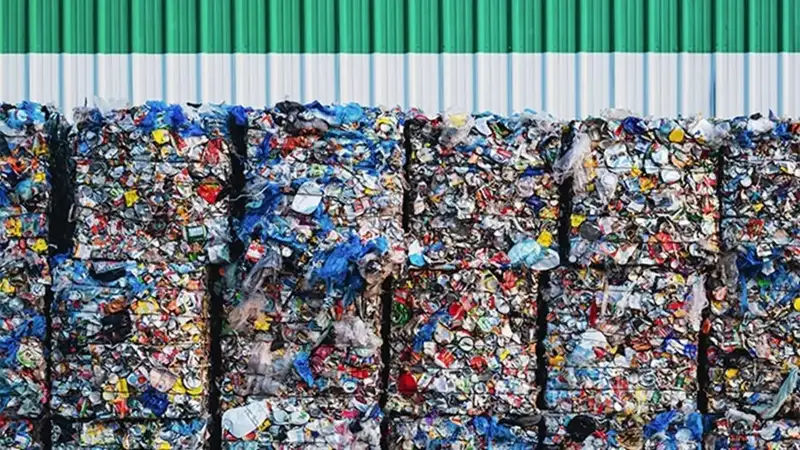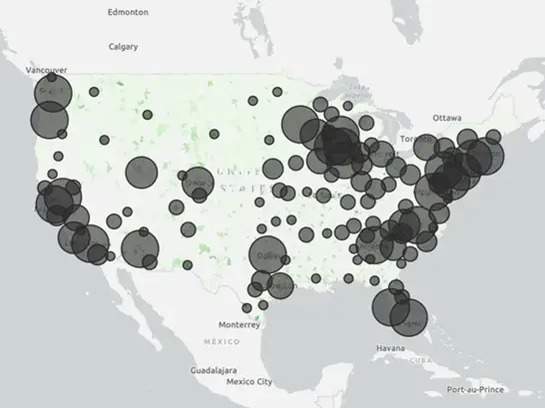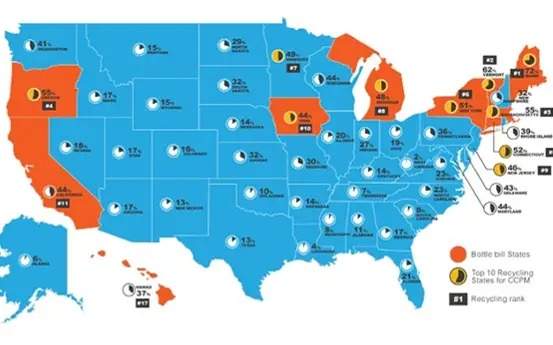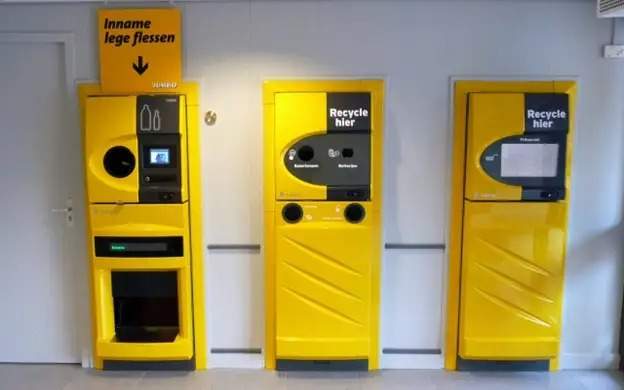Waste collection and recycling: Can the U.S. experience be useful for Kazakhstan
The United States has developed a waste recycling strategy, which has become a serious issue for the world’s largest economy. Kazinform News Agency correspondent investigates whether the U.S. experience in waste utilization and recycling could be useful for Kazakhstan.

Annually, approximately $11.5 billion is spent on waste cleanup efforts in the U.S.
For a long time, the U.S. exported much of its waste to China for recycling. However, starting in 2018, Beijing banned the import of 24 categories of waste in order to improve its own environmental situation. As a result, in 2019, shipments of plastic waste from the U.S. to China decreased by 89%, and paper waste by 96% compared to 2017. Other countries like India, Indonesia, and Malaysia also followed China’s lead. Consequently, the American waste recycling infrastructure began to lag behind the waste flow, of which only 21% was recycled.
According to “Keep America Beautiful” organization, the U.S. annually spends about $11.5 billion on waste cleanup, of which $9.1 billion (79%) is funded by enterprises, about $800 million (7%) by NGOs, $250 million (2.2%) by educational institutions, and the remaining $1.35 billion (11.7%) is covered by American taxpayers.
To address the pollution issue, the “National Waste Recycling System Development Program of the U.S.” (2019) and the “National Waste Recycling Strategy” (2021) were adopted. These initiatives are focused on creating a closed-loop economy involving all stakeholders: the public, companies, non-governmental and community organizations, and federal agencies.
Expanding producer responsibility
The first stage was the political approach of “Extended Producer Responsibility” (EPR), which entails manufacturers controlling the products they release into the market and taking financial responsibility for the disposal of their materials (electronics, paints, mattresses, carpets, mercury-containing thermostats, printing paper, plastic packaging – Editor’s note). The EPR program requires packaging producers to join a “Producer Responsibility Organization” (PRO) and contribute funds that will be used for waste collection, sorting, and processing.
Currently, four states (Maine, Oregon, Colorado, and California) have completed the development of EPR legislation for packaging, with penalties for non-compliance. Another ten states are considering adopting similar legislation in 2024, including Illinois, Massachusetts, Minnesota, New Jersey, New Hampshire, New York, Rhode Island, Tennessee, Connecticut, and Washington, D.C.

The advantage of the EPR policy is an increase in recycling and waste collection rates, reduced overall costs of waste management and landfill use, and the development of innovations that impact the environment, such as the potential for material reuse.
Among the disadvantages are the potential for increased prices of packaged goods, as manufacturers will include the cost of disposal in their prices. It is also expected that manufacturers will take on the function of recycling their products, which could negatively affect companies involved in waste collection and processing.
“To address this crisis, we must first produce less plastic and better collect and manage the packaging we use,” says Nicholas Mallos, Vice President of Conservation for the Ocean Plastics Ocean Conservancy.
Investments in waste disposal and recycling infrastructure
The second stage involved investing in infrastructure for the collection, disposal, and recycling of waste.
As part of the bipartisan infrastructure law: transforming U.S. Recycling and Waste Management, the Environmental Protection Agency (EPA) allocated $275 million from the fiscal years 2022 to 2026 for solid waste recycling infrastructure across the country: $32 million for states and territories, $73 million for communities, $60 million for tribes and intertribal consortia, $33 million for education and awareness in waste recycling, and other programs.
A clear example of this policy is the map of secondary recycling infrastructure aimed at achieving the national goal of recycling 50% of municipal solid waste in the U.S. by 2030.

Measures are also being taken to improve the connection between product manufacturers and the recycling industry. Several organizations and industry associations are involved in collecting data on waste recycling: ferrous metals (Tellus Institute, Geological Service), non-ferrous metals (Aluminum Association, Geological Service), plastics (Association of Post-Consumer Plastic Recyclers, American Chemistry Council), rubber (National Asphalt Paving Association, Tire Manufacturers Association), glass (Glass Packaging Institute, International Trade Commission), paper (American Forest & Paper Association).
“Investment in capacity and access to recycling infrastructure remains a crucial part of accelerating the transition to a zero-waste economy and maintaining the circulation of valuable materials,” said Ron Gonen, founder and CEO of Closed Loop Partners.
Population Engagement
The third stage involves encouraging the population to more actively support the implemented policy of waste recycling.
One element of the EPR is the “Deposit Return System” (DRS). A prominent example is the beverage container deposit laws, also known as “Bottle Bills” operational in 10 states. These laws add a small deposit to the price of a beverage, which is returned to the consumer when the empty can or bottle is returned to a retail point or a waste recycling center. This method encourages people to return recyclable materials, reducing waste and increasing the recycling rate of containers.

In California, a refund of 5 to 10 cents per used container is offered, depending on the volume of the container. In Maine and Vermont, the refund ranges from 5 to 15 cents, in Michigan and Oregon it is 10 cents, and in Connecticut, Massachusetts, Hawaii, Iowa, and New York, it is 5 cents.

Michigan and Oregon have the highest return rates for empty containers - over 85% - which is associated with a higher deposit of 10 cents. Connecticut shows the weakest return rate at 44%, attributed to the lower deposit of 5 cents. Recognizing this issue, Connecticut authorities intend to review and possibly increase the deposit amount to 10 cents.
75% of Americans support the idea of bottle deposits, but only 24% of Americans live in states where this program is active.

In 10 states where the beverage container deposit laws are in effect, there is twice as much litter on roadsides and 30% less pollution in waterways compared to states without such laws.
Private waste recycling companies also financially incentivize their potential clients. For instance, the American company Cohen offers a wide range of services for accepting and recycling various products from cables and cords to cars.
The monetary compensation for electronics can range from 10 cents to $4 per pound (450 grams). Another company called “Peddle” specializes solely in the disposal of cars, offering financial compensation to car owners. This is a profitable business for the company as they can recycle up to 90% of a car's components. Given that this market segment is in the private sector, there is no recycling fee in the U.S. either at the time of purchase or when importing a vehicle. For instance, a 2014 Audi A4 Sedan in running condition without body damage will be offered $1,405, while the same model from 2004 will be valued at $315.
“Consumers should have the ability to recycle and responsibly use materials, and they cannot do this without corporate responsibility as provided by EPR,” said Erin Simon, Vice President of Plastic Waste and Head of the World Wildlife Fund.
Supporting the private sector in developing waste recycling businesses serves the interests of both the public and authorities. This mechanism significantly differs from the approach in CIS countries, where the responsibility for waste disposal is placed on the government and the population, which pays a recycling fee. Clearly, to implement American practices, it is necessary to create a closed-loop system of production and waste recycling, in which product manufacturers and secondary recycling industries closely interact.
